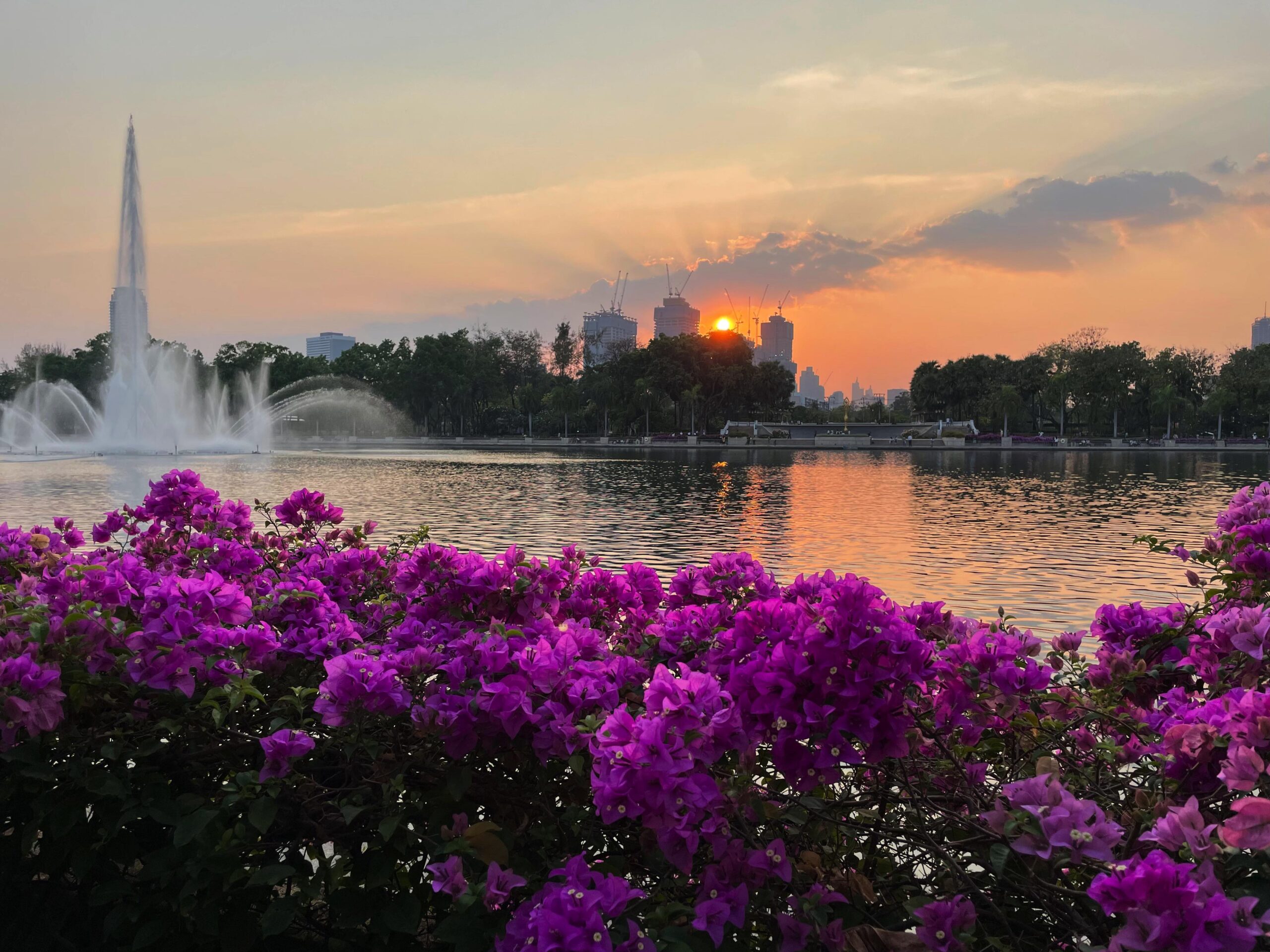I’m not really used to coming to Thailand as a tourist anymore. Monica teased me that other day that I am now 20% local, which is generous even in jest. I have very small victories from time to time in understanding a local custom and not looking like an idiot, or making myself understood in Thai at some minimal level that can be mistaken for near-competency, or just being able to navigate with some assurance.
And when I’m here, I don’t often go do the tourist stuff anymore. I am, as I did today, mostly sitting around in a rented condo working, just like I would be back in the States. I see the same people at the gym, the local 7-11, or the nearest coffee shop every day.
But in bringing Shelly and her son Soren along for the first three weeks of my trip this year, I took a deep dive right back into the touristy part of traveling.
Three weeks for Soren came right out of the school year, so he was going to have a good time no matter what. For Shelly, it was subtracted from tax season at her part-time accounting firm job, so it mostly left a lot of stuff piled up on her desk for her return.
But both of them seemed adept at throwing themselves into the moment and appreciating what they found from day to day on their first trip to Asia.
We found the best prices with Singapore Air, although they came with a kind of tax: a longish layover in Singapore before connecting through to Bangkok. But we made a virtue of the vice by extending that stopover even further, for a full day, and running around the city-state taking in as much there as we could as well.
In practice, that meant taking selfies with the Singapore merlion, visiting the strange metal trees of the botanic gardens, and hanging out in the new mall at Changi airport, which is the centerpiece of the building:
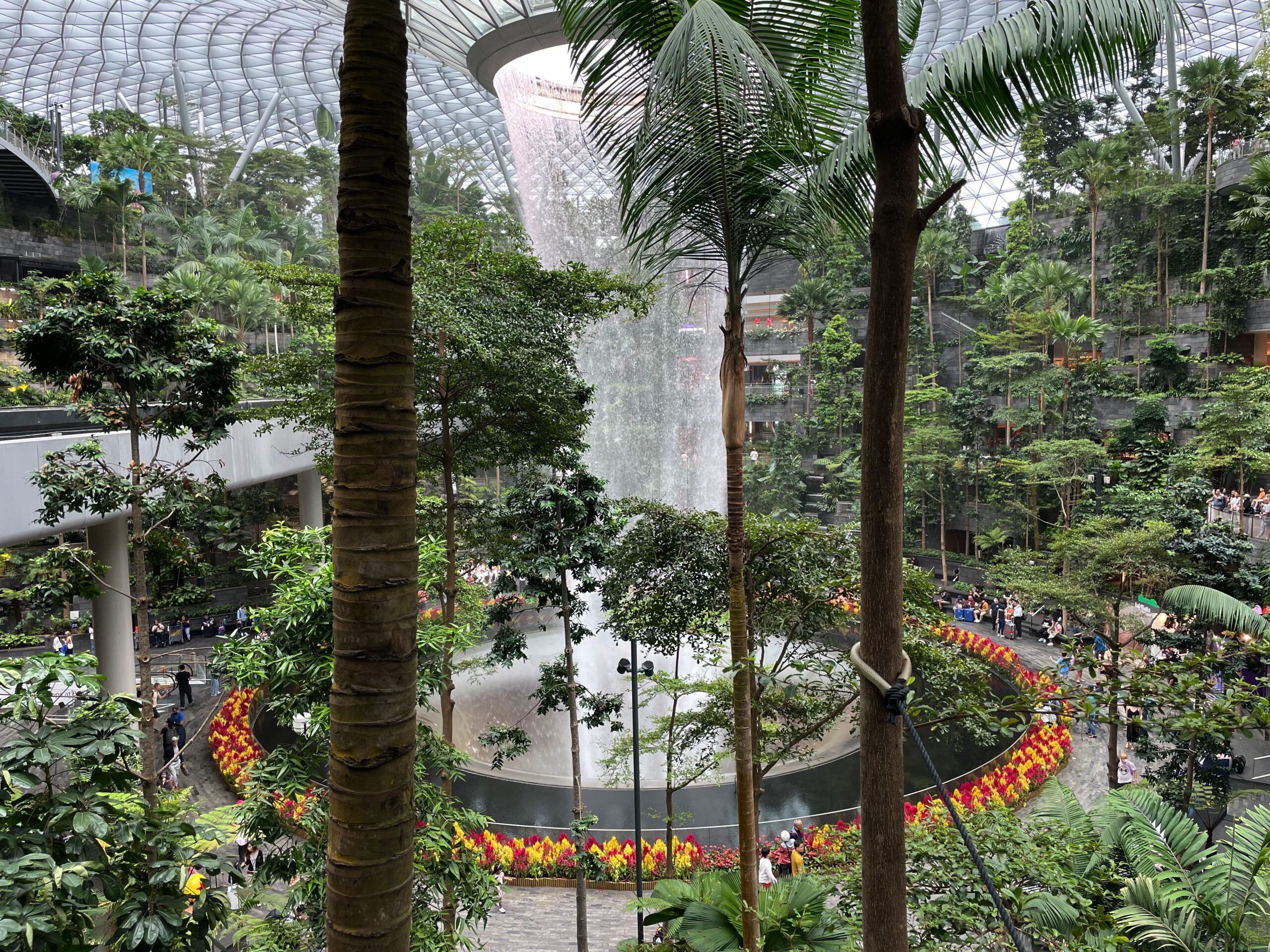
We met up with Maxx and his girlfriend Kay for lunch one of those days, both to say hi and so I could pass off a massive suitcase stuffed with Maxx-stuff that had been stored with his sister for nearly six years. Apparently the transition to southeast asia now seems secure enough that he felt he should send for his winter sweaters.
Then we were off again, this time to Koh Lanta, a large island along the Andaman Sea. We booked a week in a beach resort there, and we did beach resort stuff—swimming, snorkeling, laying on the beach, reading, eating.
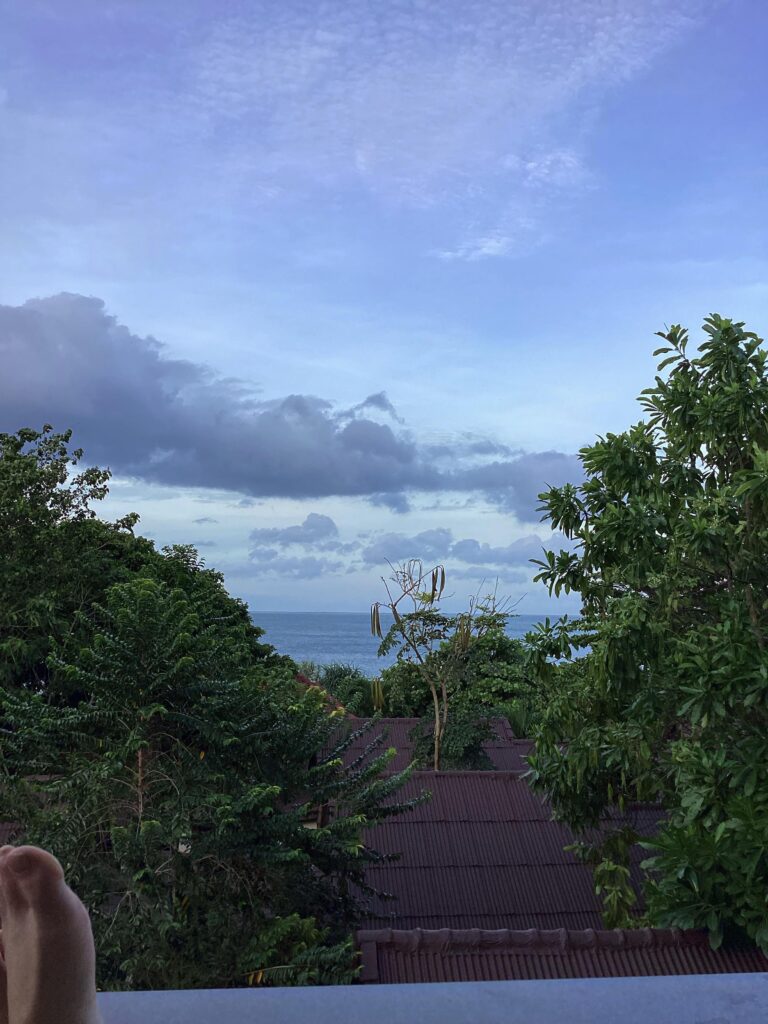
We did book a snorkeling trip on a big boat out of Old Town, one of the larger settlements on the island. It was a whole day, bumping around the smaller islands to the east of Lanta, where I had never been. One of the stops, though, was the Green Hole, a place Maxx had been recently and recommended.
Since I didn’t bring my phone with me, I have no pictures! I’m sure you can get some from Shelly, or get a link from her to all the ones taken along the way by Mr. Mon, the cruise director.
I had one of my local moments with Mon en-route. He said something and I replied in Thai with something approximating the correct accent and he startled rattling more Thai off at me far faster than I could absorb. After he realized I couldn’t really get it, he switched back to English. But in the quiet moments in transit between the different stops, he would swing back near where I was sitting and chat for a bit.
I asked him if he was from Koh Lanta originally and he said that he had been born there, but left when he was a teenager to go to Krabi for special schooling. After, he had gone to Phuket, where he had worked at a job in marketing trips to tourists, which he hated (the job, not the tourists—or at least he didn’t admit it if he did hate tourists!). After three years of it, his brother got him a job as an unpaid deckhand on a local ferry.
He was still doing that in 2004, working the Phuket to Koh Phi Phi run. On the morning run, right around 10am, they had just dropped off a full load of tourists and locals at the main pier at Ton Sai beach when a call came in from Phuket on the radio—a big wave was coming.
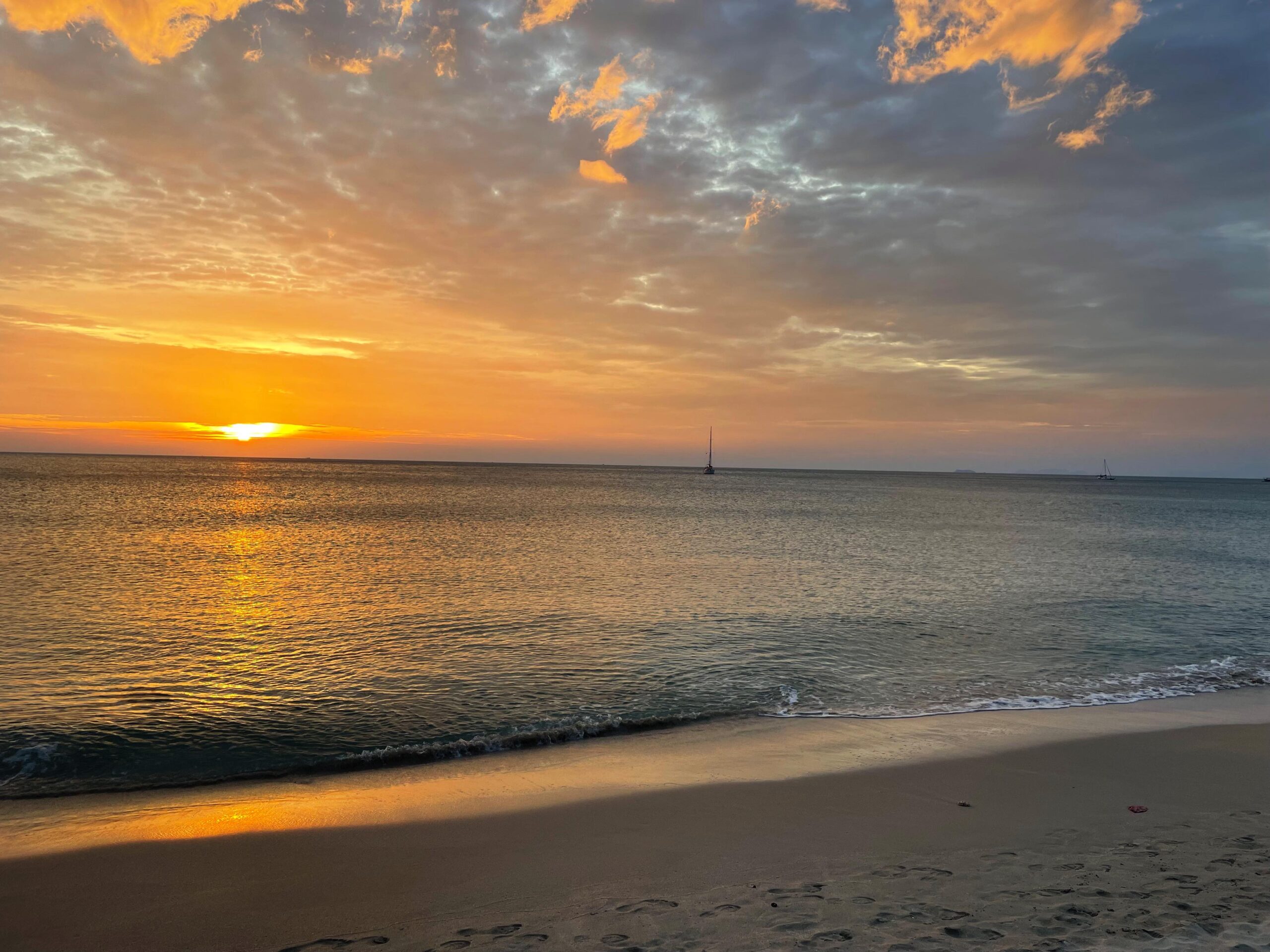
As all prudent mariners do in the threat of a tsunami, they cast off immediately and made for deep water south of the islands. They waited, and waited… nothing. They watched the island and kept waiting.
Then finally, Mon said, it rose up out of the bay and walked across the island. Phi Phi Don, the largest of the Phi Phi islands and most heavily populated, is basically two ridges tied together by a narrow isthmus of gorgeous beach. When the wave hit, it did so from both sides, marching out of the bays and slamming together in the middle of the isthmus.
Thai record keeping is voluminous but never accurate, so only estimates are available for how many people were on the island that day. What they could count were bodies, 850 of which were eventually recovered from within the smashed remains of buildings and banyan trees. Only estimates remain of those lost to the sea… between 1,200 and 4,000.
Mon’s captain took the ferry back in when it was safe. He handed Mon a radio and a flashlight and told him to go ashore, and bring back as many as he could, in groups of 10. Mon stepped on a nail in the debris almost immediately but kept going. And going… for days, they ran survivors back to Phuket.
Mon said in none of those groups did he see any of the people who had gotten off the ferry that morning.
He had tears in his eyes as he told the story.
It was a bit difficult to shake that off and enjoy the snorkeling afterward, but I did my best.
I’d heard that the waters had become clearer and the sea-life had returned to greater levels here over the course of the pandemic, as the tourist spots fell silent. And that was pretty much our experience as well… far more fish than I’d seen on my other visits, reefs alive with coral and tiny crabs.
We went directly from Lanta to Chiang Mai, a city in the north, cooler and more hilly terrain than Bangkok. It’s a tourist mecca, at least at this time of year (the winter)—in the summer season, it’s famously one of the places with the worst air quality in the world.
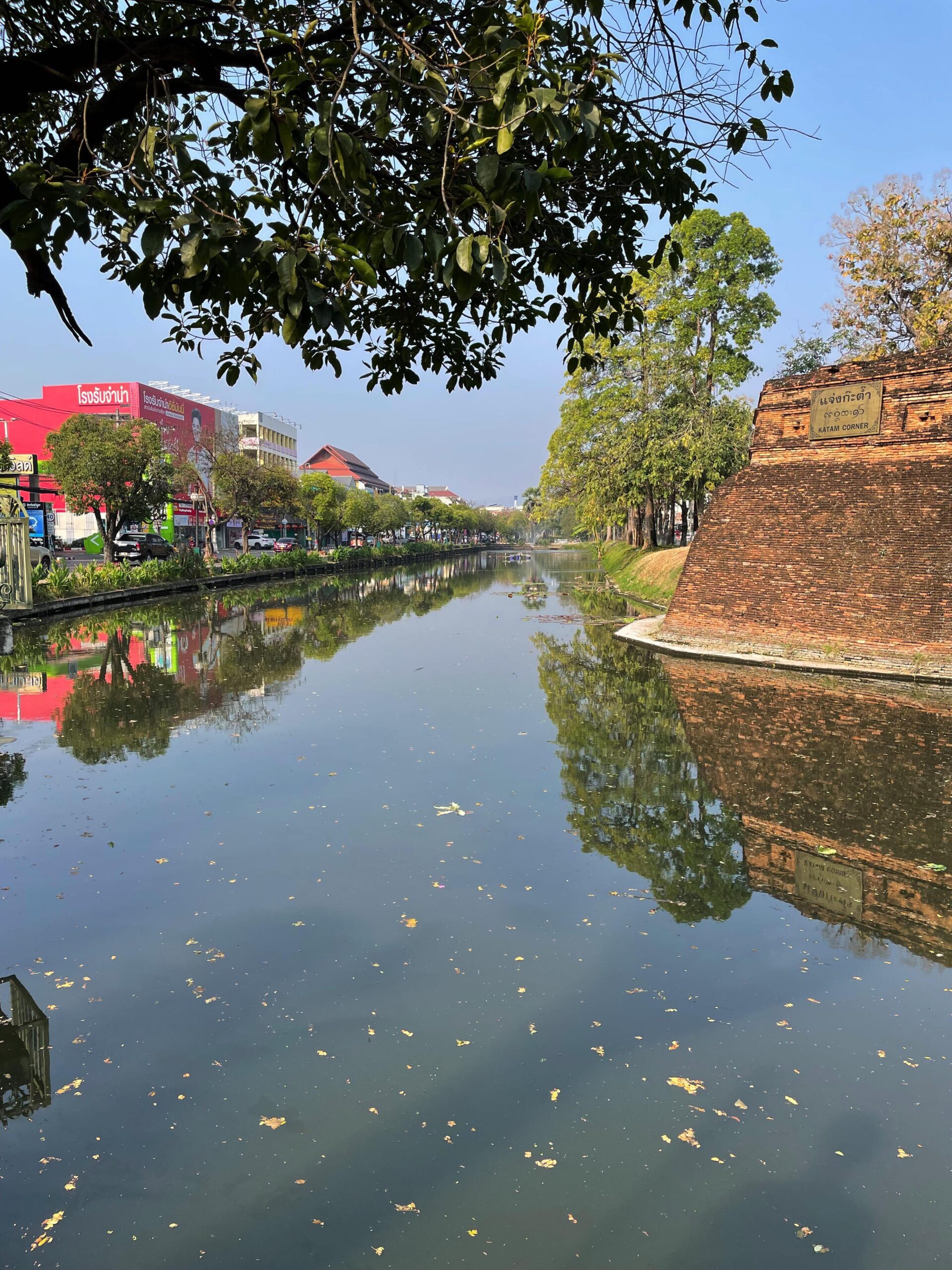
We managed to get there just before the pollution set in, though, and had a fine time walking around the night markets and the old city (see past entries for more Chiang Mai).
The big event was a visit to some elephants out in the jungles of one of the nearby national parks, though. I’m not a big elephant person, and many of the tours seem pretty sketchy from an ethical perspective—elephants not well taken care of, or basically made to perform for tourists. But Shelly’s sister and brother-in-law had been on this one previously and we had their assurances that it was above-board.
Still, it’s not the sort of thing that I would choose to do on my own, so I can’t say I was particularly excited about it. But in the event, it turned out to be fun and informative.
A lot of that was down to our tour guide, whose nickname was Superboy (which requires some explanation, even in the Thai constellation of crazy nicknames—it turns out his actual name is Supalai [or something like that, I don’t actually remember it, but for our purposes all you need to realize is that it starts with Sup], and his nickname as a child was “Boy” [fairly common]. When he got older, he smashed the two together… thus, Superboy).
The elephants are way out in the sticks while all the tourists are in town, so the tour companies organize transport to and from the village. We lucked out in that instead of a rented van, we got picked up together with two others by Superboy himself in his SUV.
That meant we got a lot of one-on-one time with him to and from as well as on the tour, and so a lot more background on the elephant touring business as well as his own life and experiences. A former soldier, he’d started off in the tourist industry by hauling gear on hiking expeditions in the national park. Along the way, he picked up English mostly just by listening to tour groups and watching TV (a not uncommon method for many Thai students).
About the time he was getting tired of humping bags around for farang in the jungle, a family in his village had the opportunity to buy back rights to a couple elephants they had previously owned. Turns out elephant ownership is complicated and that most tour outfits actually just rent their elephants from families who previously owned them for farming and other uses but could no longer productively use them.
Anyway, this village collectively started up the tour operation—right as COVID was starting. But they managed to weather the downturn, and today have four elephants of various ages.

They run the tour groups but also use the elephants to trim back foliage in the forests around the village for farming. Each elephant consumes some ungodly amount of food each day, so keeping them fed is a challenge and forage goes a long way to avoiding big food bills.
When we arrived at the village, they had everyone change into traditional hill tribe garb. Elephants have pretty awful eyesight, it turns out, so by using standard costumes they are used to, it minimizes the disruption from a truck-load of new people showing up each day.
We spent a lot of time chucking bananas at them, or handing them off to their amazingly graceful trunks. They are basically just big gray eating machines from what I could see, but they also have a bit of personality. One got thirsty, circumvented the low barricades that had been erected between us and them, and cleverly dismantled the nearest water spigot to drink straight from the pipe.
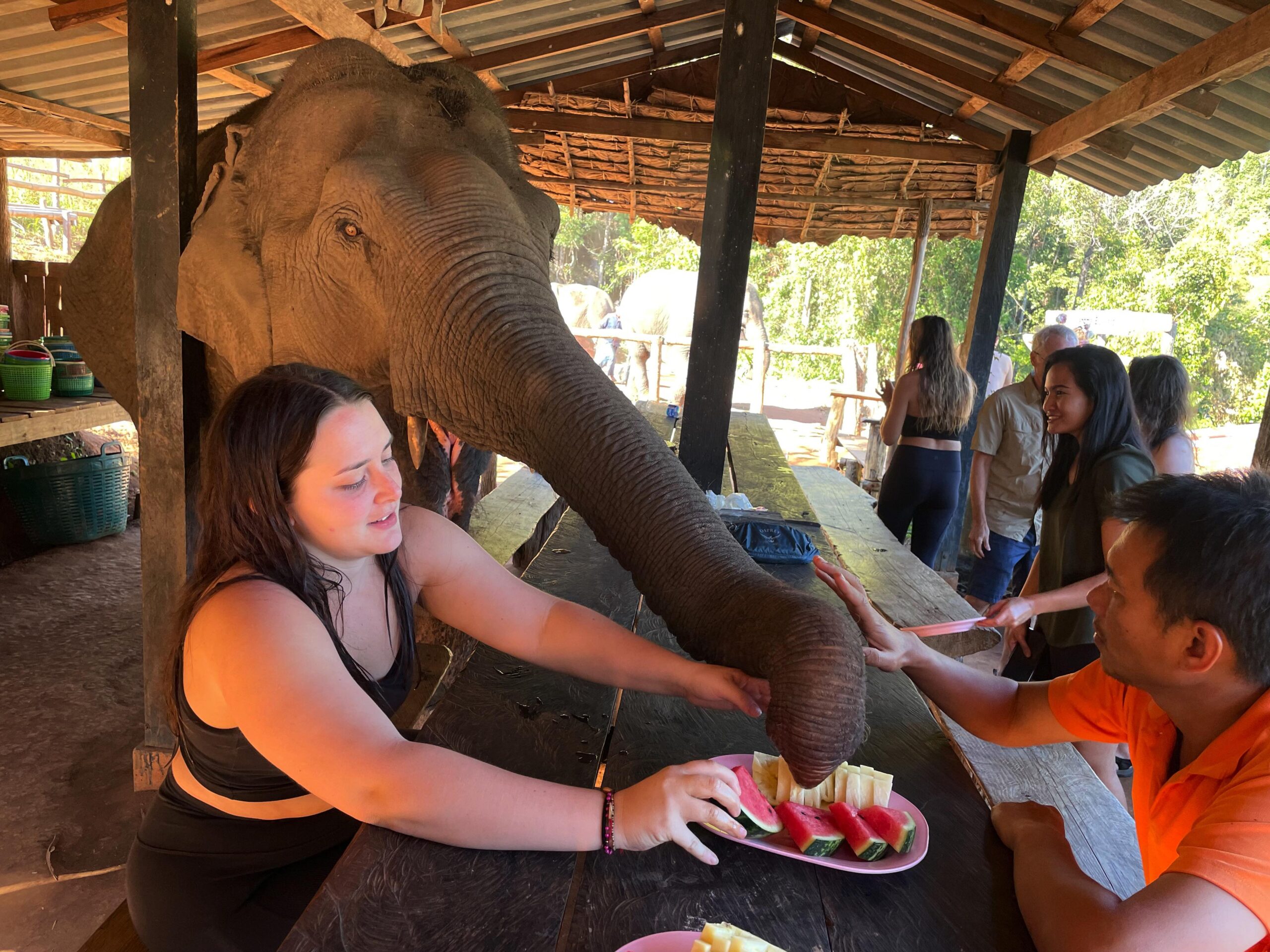
After the light snacking, we took a walk through the jungle with them. We received special instruction on passing them without startling them. That turned out to be important, because the trails were somewhat narrow and elephants pretty much go where they want.
Except we learned that they apparently have a beef with the local cattle, also out in the forests grazing. They heard one, unseen, on a nearby slope and stopped and fidgeted until it left.
We pretty much went at their pace and followed where they wanted to go—the mahouts were pretty laid back and only turned them around when Superboy said it looked like they were overheating.
He had obviously put a lot of research into elephant care and upkeep and rattled off a steady stream of facts about feeding, breeding, and the impossibility of getting veterinary services for them. There were also a lot of economic factors (see above regarding elephant rentals) that we hadn’t really thought about.
Since they were hot, we went back and gave them a mud spa bath followed by a relaxing rinse in a chilly waterfall. I’m actually not sure how much of the bath was mud versus elephant poop, but anyway it was nice to rinse off afterward.
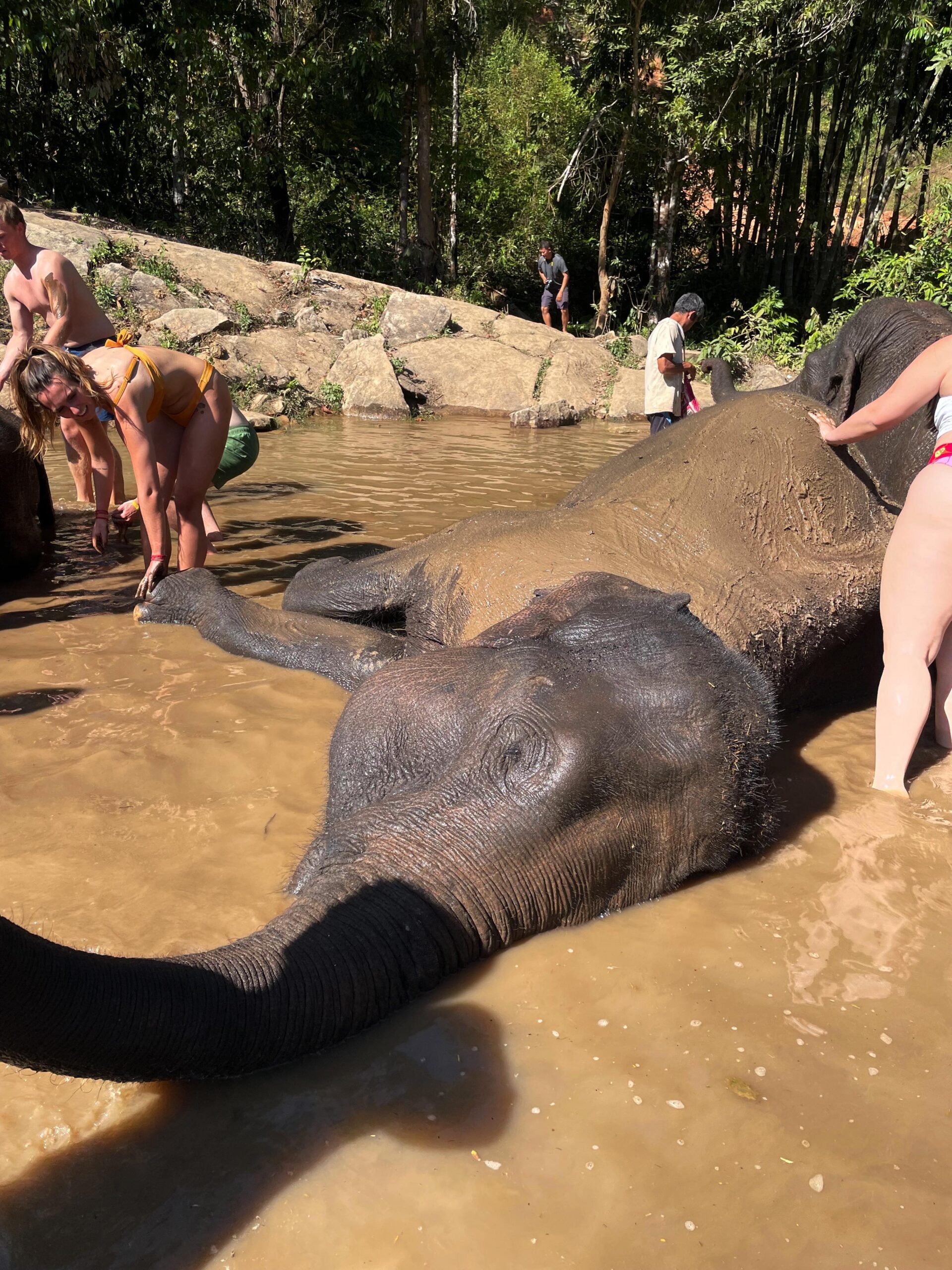
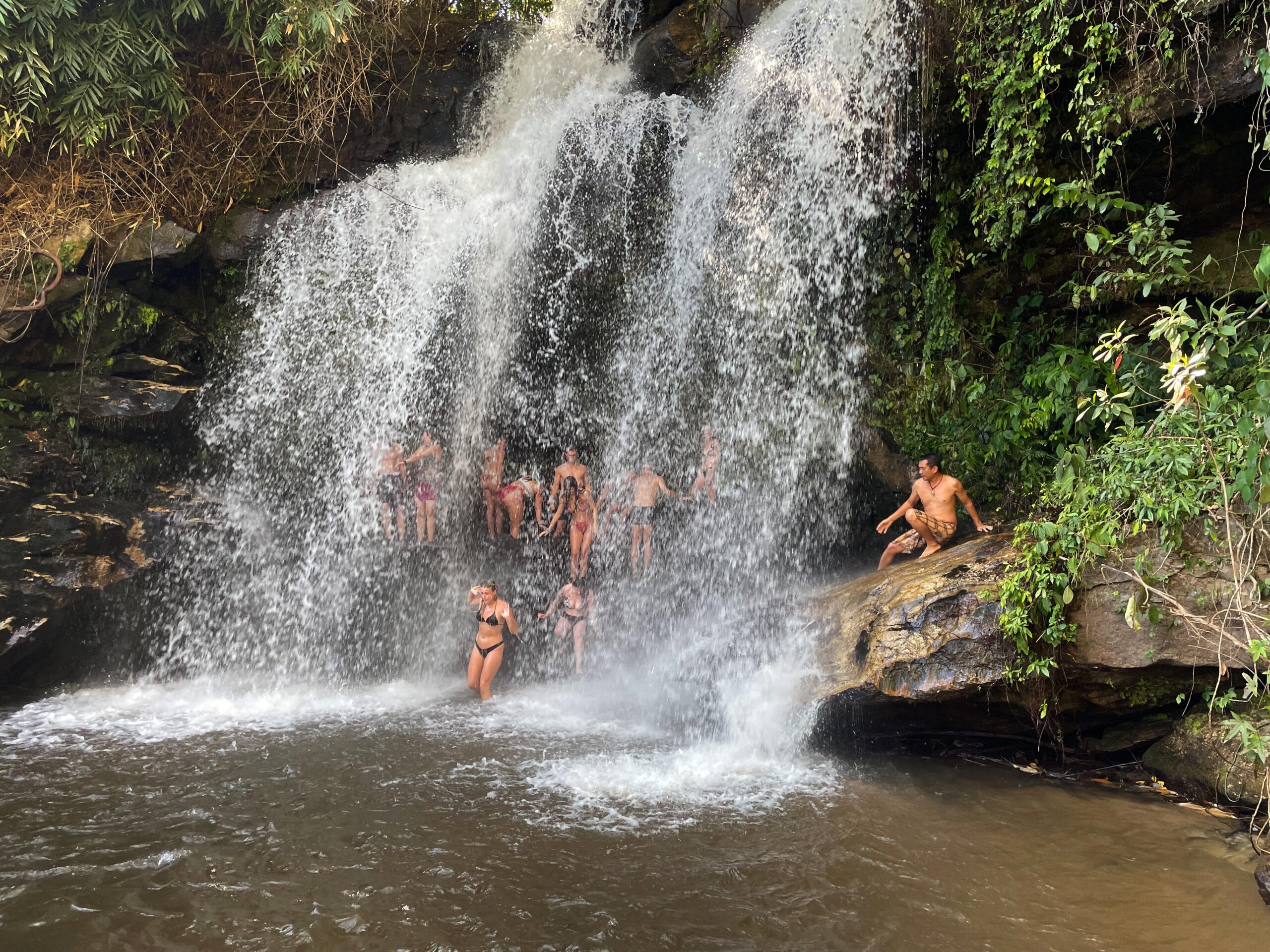
After that, we were back to Bangkok and Shelly and Soren flew back home. I ducked over to Vietnam for a week to check out a nice beach and shake off whatever lingering traumas I might have had after getting stuck there for four months during COVID.
Now I’m back in Bangkok and on my own for a couple of months, in a condo not far from the Chao Praya (I have a little sliver view of the river and the chaotic traffic it hosts, in fact).
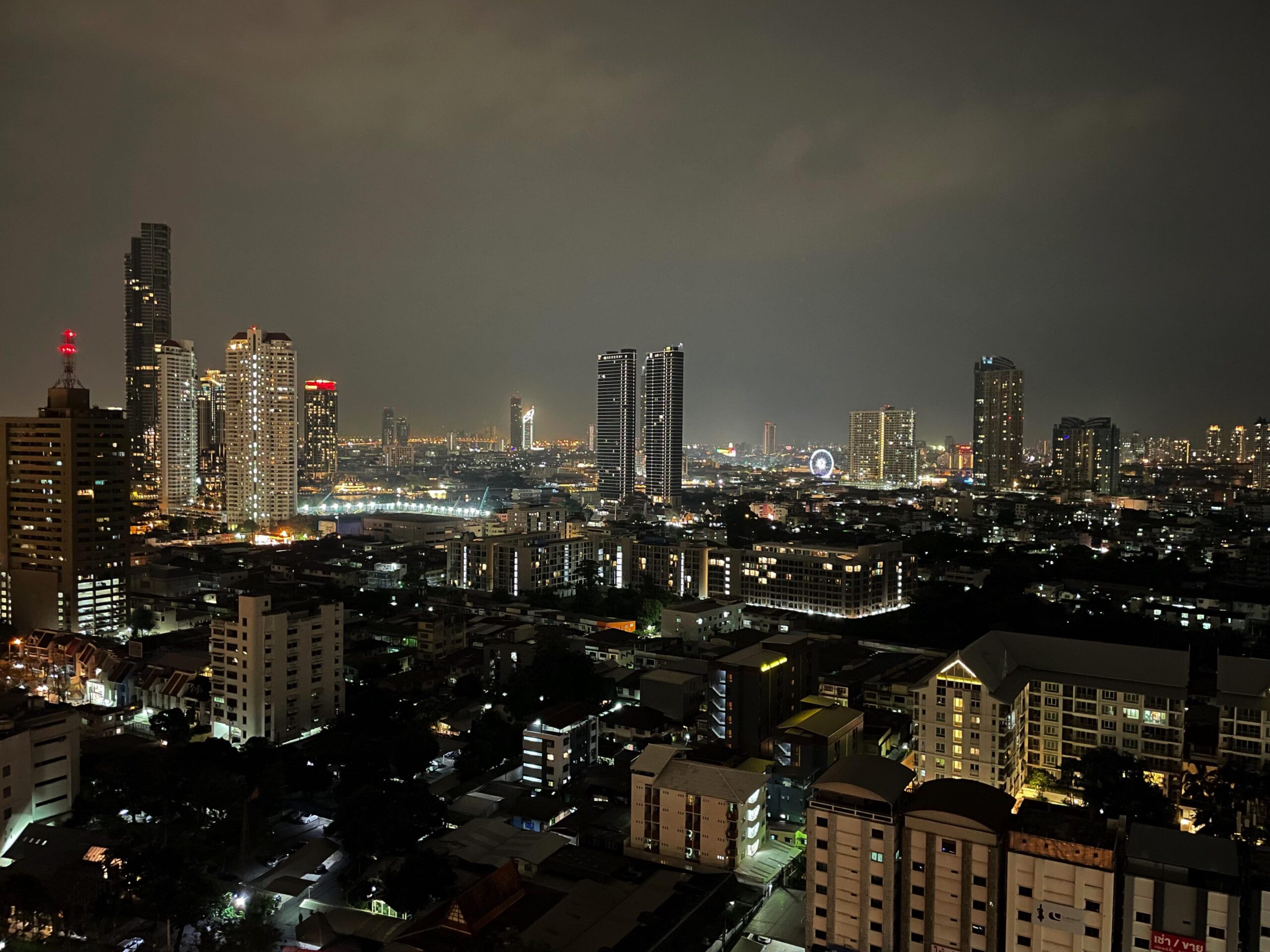
I’ve taken to hanging out at Icon Siam, a big and (maybe) the newest mall in Bangkok. It’s right on the Chao Praya and it’s only a single stop away on the BTS Gold Line, for which the station is right out in front of my building.
It’s a pretty generic place with all the kind of fake opulence that seems to be the style here. Like most upscale malls it has an upscale grocery store in the basement, called “Dear Tummy.” It’s actually not a very large store, though, so the selection isn’t great—but I can get most of the basics there. Since it’s just a single stop away, I can get cold stuff without worrying about it too much, too.
The restaurant selection isn’t as great as some of the older malls, either, but it does have one advantage that keeps me coming back: an ersatz, very sanitized, extremely bland version of a traditional Thai floating market down on the lower level.
It doesn’t have nearly the variety of the real thing, and the prices are somewhat higher, but there is a good variety of cheap and delicious food to be had.
There’s an added bonus, too, which is that the food stall vendors are so accustomed to the hordes of tourists passing through that even my most rudimentary efforts to order or offer pleasantries in Thai appear enormously impressive to them, and I get a lot of smiles and nods when I do it. That’s the kind of positive feedback I need! I don’t mind being laughed at but some semblance of forward progress is nice from time to time.
But I’m wrapping it up here now, on to Japan next… very busy with work but hopefully will have some interesting things to report back after my project is wrapped up.

